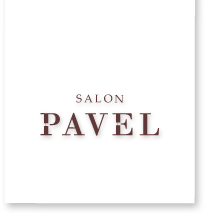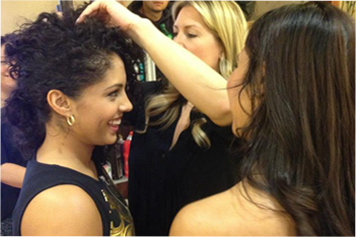So, you’ve decided to color your hair. Getting a fresh new look is an exciting prospect. To get the best results possible, you will need to think about a few things before you sit down in your favorite hairdresser’s chair.
First of all, not everyone will look great with just any color. Consider this: have you had your hair colored previously? What was your favorite color, what was the least favorite?
Are there any shades that you haven’t tried yet? What color is your hair now? Your current hair color could very well have an affect on what your new color could or should be.
Let’s make things as simple as we can. When you look at someone else’s hair what do you see? Usually, after a quick look a decision is made on the spot. Some form of blond, brunet or a red head in countless variations but the basics is the main focus here.
How would you like others to identify you?
Please remember that above is only a general direction. A blond doesn’t have to be platinum and red is not necessary the color of a fire engine. There are many beautiful soft colors that belong to those general groups and are not drastic at all.
So before you move forward, do yourself a favor and decide which direction you would like to move. Ask yourself these two simple questions:
Do you want to be lighter or darker than you are now and would you want to see warmer or cooler tones?
Warmer tones are your gold, copper and red colors and cooler tones are also often called ashy tones. To make it easy to describe the cooler tones, you can think of it as just an absence of warmth in color. It may sound scary, but the cooler tones are usually achieved by adding a little bit of gray, blue or green pigment to your base color.
Don’t be afraid, however, your trusted hairdresser knows just the right amount so your hair will not look blue or green, unless of course that is what you want.
If it’s neither warm nor cool then what you want is a neutral color.
In addition to the color direction, you need to think about the current condition of your hair, or the level of damage that may be required to achieve a certain look. Some looks require much more processing and maintenance then others. This is a very important thing to consider, and yet again, something that is hard to do without someone guiding you with his or her extensive experience and education.
Another very important thing to consider is your skin tone. Choosing the proper hair color can be an easy way to accentuate your complexion and enhance your beauty.
Finally, reflect on your lifestyle and career goals. Sometimes, expressing your fabulous, creative and carefree personality in your appearance doesn’t go along with your professional carrier growth.
Deciding to color your hair is easy, but there are a few things to keep in mind when thinking about a specific look. For example, how long do you want the color to last?
Consider the three types of hair color from which you can choose. They are permanent, semi-permanent and demi-permanent.
All hair color fades. Permanent hair color simply means that your own natural color is permanently altered and when your new color fades the underlying hair is not your original /natural color anymore. Of course if you decide to get your natural color back you can patiently grow it back. Depending on your hair length it may take a year or a few to get all the previously colored hair grown out and cut off.
Permanent color is always necessary if you are going lighter or if there is a resistant gray that needs to be covered.
Most permanent colors have some amount of ammonia, usually the lighter colors more than the darker ones. Therefore permanent colors cause some damage to the hair, especially if you are going lighter.
Semi-permanent color will also fade, but it does this as your hair is washed. This choice works well when you want to go to a darker shade versus a lighter one. However, let’s set things straight — you can’t make your hair lighter temporary and think that it will wash out or fade back to original darker color. Once you lighten your hair some of your natural pigment is removed and it’s not coming back until your hair grows out.
As a general rule, no matter what you do to your hair color it will always grow back the same as it was before with exception of getting naturally grayer of course. However, it is very common for hair to change through out lifetime. It could get thinner, darker, and straighter of curlier; but those are natural changes and have absolutely nothing to do with coloring your hair.
If you want to cover gray hairs that are not super resistant, a demi-permanent hair color works well. Its color lasts longer than that which is semi-permanent and it too, fades when washed.
Now to the less technical and more fun parts — deciding what type of coloring you want.
There are countless techniques to choose from. To just name a few more common once consider: an all-over coloring, adding highlights or low lights, a balayage or ombre technique (where layers of colors are either horizontal, vertical or diagonal).
This is when a picture is worth a thousand words. Do your homework, look at the fashion magazines, collect some pictures of hair coloring that you like. Also it is just as important to know and communicate what you don’t like.
If you see something that you don’t like save that picture for your hairdresser as well, it will take all miscommunication away from your consultation. Nothing fancy here, just a very simple “I like this and don’t like that”. It is not for you to choose the coloring technique that your hairdresser will use, but fell free to pick a look that you like and let a professional decide how to achieve it with your hair.
The all-over technique is simply applying a single color to all the hair. This is a single process coloring. To change the color of your hair drastically, say from dark to light, you will need a double process procedure in which the first process actually bleaches your hair or removes the color and the second one adds the new color.
A really popular way to bring color and dimension to your style is to add highlights or low lights. As you’d expect, highlights add a lighter color to small sections of your hair and low lights add a darker one. You don’t have to just get one color for either of these processes. In fact, the more colors employed, the more your hair has added depth and movement. Just keep in mind that not all colors look good next to each other and you most likely don’t want to look like a rainbow (unless you do).
As you are probably aware, both highlights and low lights are applied to the hair using foils or some other material to keep colored strands separated from the rest. However there are other techniques like balayage when color is applied to hair by hand, without using foils . It looks like a free hand painting.
Of course each technique has its benefits and disadvantages. Please remember, that if you insist on a certain technique your hairdresser/colorist may not be familiar and comfortable to execute it and it will definitely affect the end result.
As a good rule of thumb — find a look and let your trusted hair professional choose the right technique.
No matter what color you choose sometimes it takes more than one visit to get a fully finished look. So ask your hairdresser what is a reasonable time expectation, before you get in the chair.
A more pronounced look is achieved by using the ombre technique of applying color. When finished the hair is darker at the scalp and blends to a much lighter color at the ends or in reverse.
Whether you want a subtle new look or one that makes a statement, keep in mind that it is easier and less damaging to go to a darker color than a lighter one. The reason is because you would need to have two processes completed, one to remove the dark color and one to add the lighter.
Sometimes it can be confusing when you hear hairdressers talk about levels of hair color. Let’s make it simple. There is a worldwide standard for hair coloring levels and it goes from 1 to 10.
Level 1 is darkest and 10 is lightest. So 5 is darker then 6 but lighter then 4. Pretty straightforward.
A darker blonde will have a lower level number and a lighter shade of blonde will have a higher number. With your color in mind be sure to ask your stylist if they want you to wash your hair just before a coloring. Keep in mind that oils in your hair will help protect from the damage that occurs when the chemical coloring process takes place.
Now it’s possible that you may be considering doing the coloring yourself. That is an option. However, think about the time and effort you’ll invest all for an unknown result.
Having to go to a salon to fix a color mishap will only make it more difficult to achieve the look you want, not to mention the additional cost and added frustration and damage
Why not trust a professional who colors hair everyday, has the experience to know what works and possesses the skills to make that fresh new look of yours a reality?
It’s worth it to invest in yourself and get a fantastic new hair color that helps you look and feel your best.
Tagged: hair color, makeover, new style


 Loading...
Loading...



















I always answer this by telling my clients that you can pull off any color, it’s just about finding the right tone within that family that suites your skin and eye color.
I like that you mentioned how you should consider having your hair professionally colored to minimize the chances of a mistake being made. My wife would like to color her hair blond to match the rest of the bridesmaids during her sister’s wedding, but she is worried that doing it herself could damage her thin hair. Maybe it would be best to find someone with experience so that she can get the results that she is looking for.